High Heel Shoes as a Symbol of Class, Gender and Sexuality
The definition of a high-heel shoe is a type of footwear with a heel that is elevated above the toe. Throughout their history, they have acted as symbols for differentiating between the sexes and the social classes, along with being considered symbols of sexuality and fertility.
They give off a contradictory image as they make a woman appear that her movement will be easier and more elegant as she seems to be already half-walking in the standing position. In reality however, high heel shoes shorten the step and make walking slower and less steady.
While today’s version is worn for fashion purposes only, precursors to the high heel did have functional value but that did not necessarily stop them from being indicators of social status.
High Heel Shoes in Ancient History
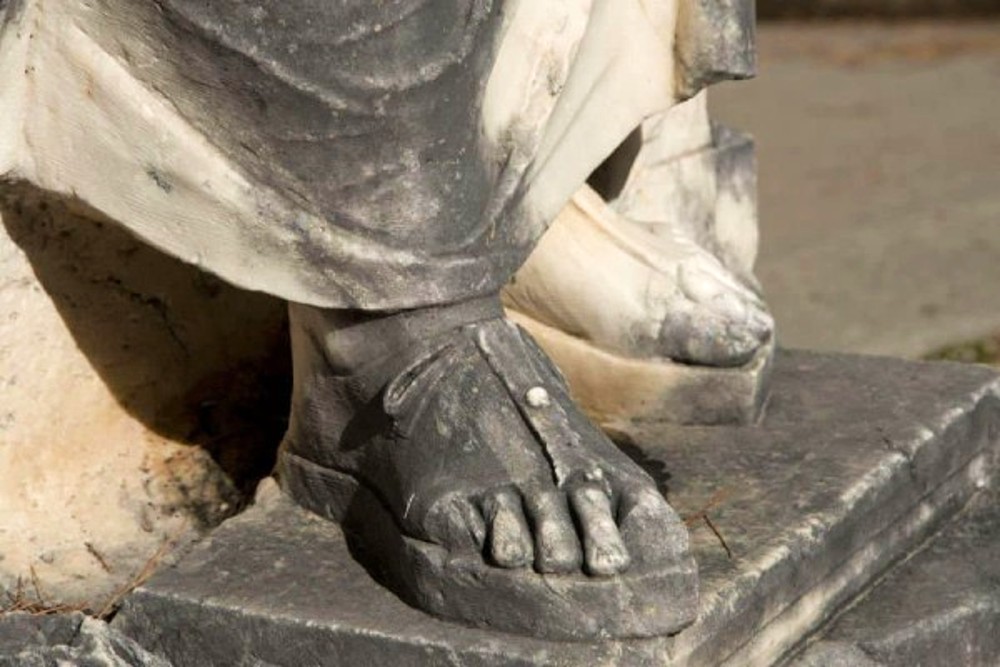
In ancient Egypt, wearing shoes may have served to set apart the lower classes from the nobility as common people walked around barefoot while the rich usually wore flat, leather shoes. Murals from around 3500 BCE show members of the aristocracy also wearing shoes strikingly similar to high heels. Both men and women wore the shoes and their main purpose was probably ceremonial. In a more practical application, shoes with extended heels were also worn by Egyptian butchers who wished to keep their feet out of the blood of the animals they slaughtered.
In ancient Greece and Rome, actors often wore a shoe known as the Kothorni (pictured above) that had high wooden or cork soles. The heights would vary in as much as the higher the social status of the character being played by the actor, the taller the shoes would be.
It was probably during the Roman Period that high heel shoes first become an aspect of what we now call women’s history. During this time, they became synonymous with the sex trade and women started wearing shoes with a heel to identify their profession to potential clients.
In the Medieval Period, the high heel would be mainly used for practical reasons. Both men and women wore wooden shoes and in a bid to keep the expensive and fragile footwear out of the muddy streets and protect them from the uneven surfaces, people would walk on heels known as pattens that were attached to the bottom of the shoe.
The Chopine, Feminism and Class Distinction 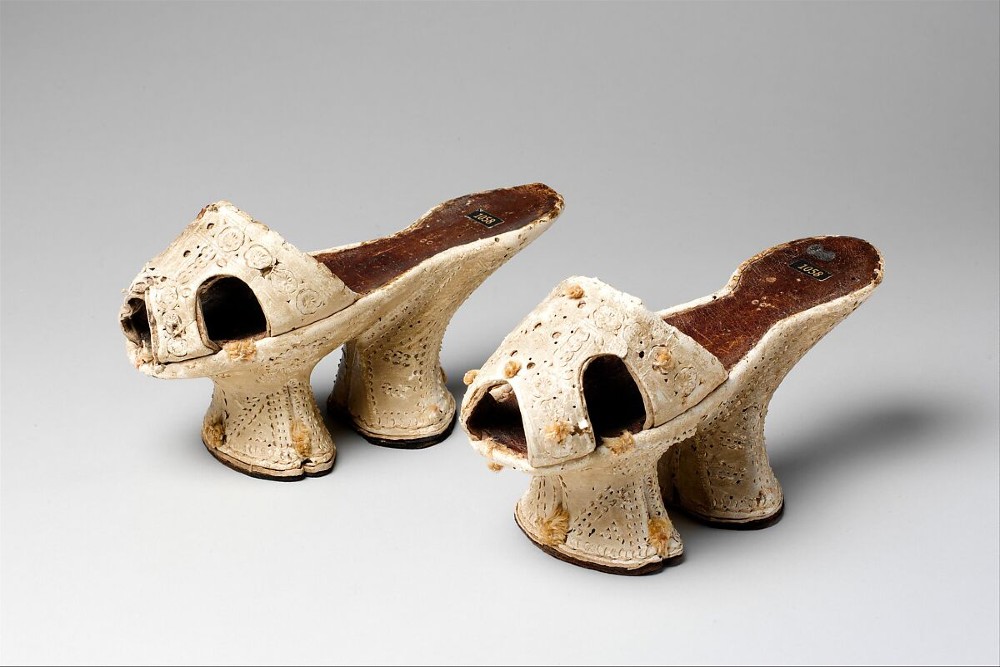
The chopine or platform shoe was invented in Turkey in the early fifteenth century and was popular across Europe for the next two hundred years. Only women wore chopines which marked a turning point in women’s fashion history as they had very little practical use but were deemed to be stylish and attractive. In some cases, the heel would be up to 30 inches high (76.2 cm) meaning the wearer had to use a cane or have help from a servant to walk.
The chopine became a status symbol for high-class women in Europe and could be adorned with gold laces, embroidery and decorative leatherwork. Ladies purchasing them had an extensive say in the appearance of the shoe and would tell the cobbler what materials to use and how high the heel should be.
Despite the choice and individualism it offered women, many believe that the chopine saw the start of footwear becoming a women’s rights issue. It is thought that the practice of wearing shoes that were increasingly difficult to walk in was encouraged by husbands who believed the cumbersome movement would inhibit the chances of wives having illicit liaisons with other men.
The Rise of the Modern High Heel 
During the early sixteenth century, the high heel as we know it today came into being though it was worn by both men and women. It is believed the shoe came into existence by accident and developed as a result of repeated repair work on the heels of shoes that would eventually elevate them and build them up into high heels.
Throughout the 1500s, a more practical application saw the popularity of the heel grow. Both men and women wore riding boots with heels, usually around 1-inch (2.5 cm) high, that helped prevent them from slipping from the stirrups. However, even this usage soon took on a more fashionable element and it became popular to have higher and thinner heels on riding boots, especially amongst the wealthier classes.
High Heel Shoes and Early Modern France 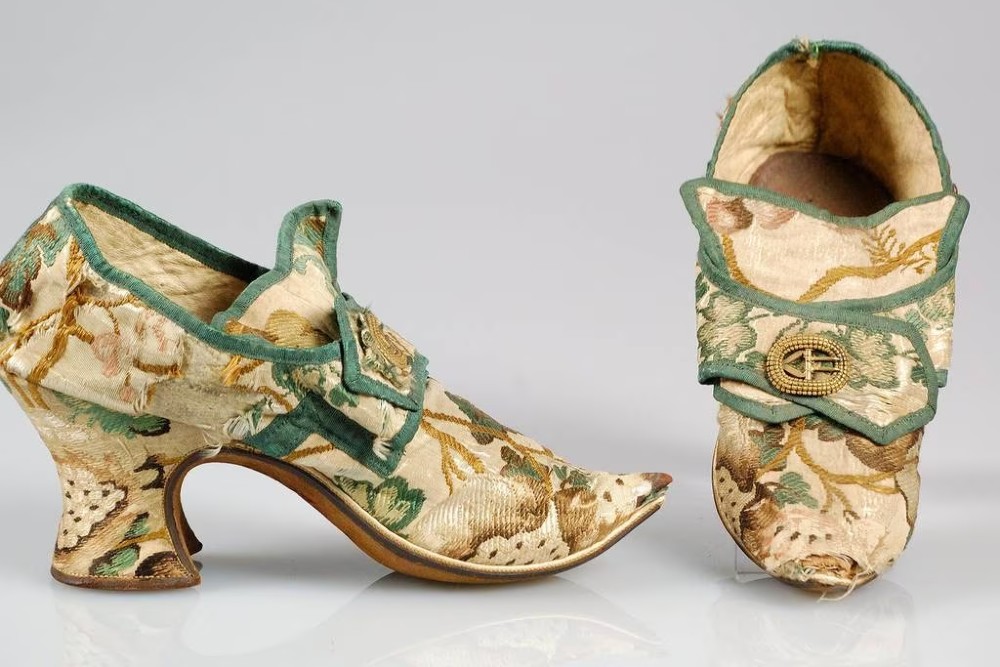
During the European Renascence, high heel shoes were a fashionable status symbol worn by both men and women from the privileged classes. It is believed that Catherine de Medici (1519 – 1589) started this trend when she wore high heels to her wedding to the Duke of Orleans, (the future King Henry II of France).
In a bid to boost her short stature and add appeal to her plain looks, she donned shoes with 2-inch (5 cm) heels, impressing the French Court so much that the idea took off. By the second half of the sixteenth century, wearing high heels was so synonymous with the aristocracy that a person of class was said to be “well-heeled”.
In the early eighteenth century, King Louis XIV made it illegal in France for anyone who was not from the noble classes to wear red high heel shoes and nobody could wear them higher than his 5-inch (12.7 cm) heels. Over the next couple of centuries, the heel became longer and more slender and the idea of the eroticism of the foot and footwear grew with it through art, fashion and literature.
As the heel in France was a status symbol of the higher classes, Napoleon had them banned in the aftermath of the French Revolution. Therefore from the late 1790s, heels were reduced in size and replaced by a slight wedge or spring heel.
Sexuality and the High Heel 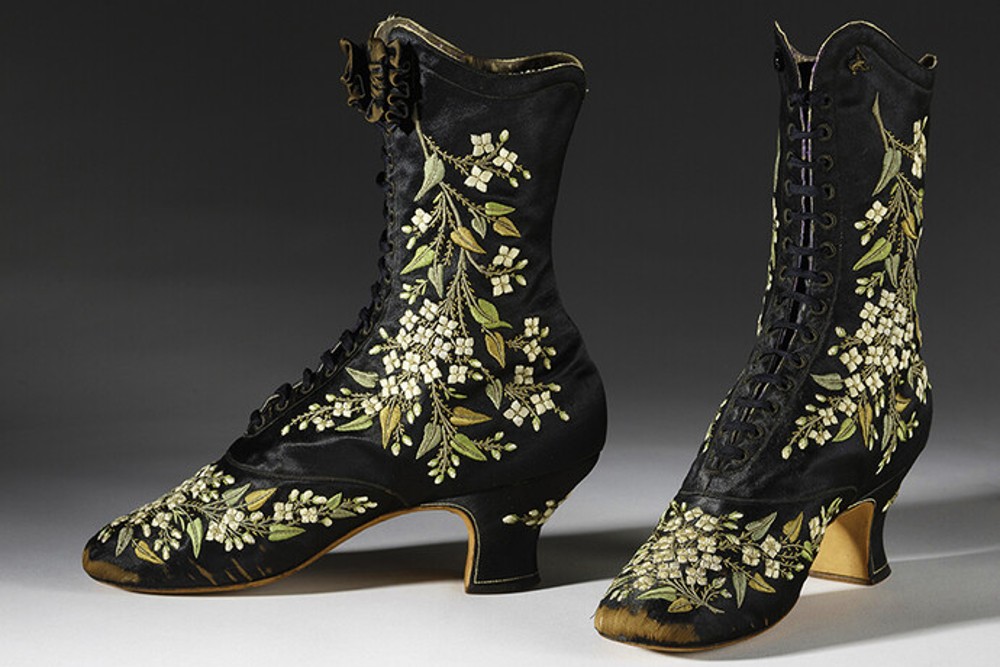
In many parts of Europe, emphasis was put on boosting the heel to add a more refined and sexually desirable effect on the foot, leg, body and posture of the wearer. However, in the New World, this sexualisation of footwear was not seen in such a positive light. In the Puritan Massachusetts Colony, for example, a law was passed that banned women from using the footwear to seduce a man, for fear of being tried for witchcraft.
Attitudes to women’s fashion would gradually improve in the United States, but it was not until the mid-nineteenth century that they caught up with Europe in allowing women to embrace shoe fashion.
From this time, high heels grew in popularity and became more widespread as a fashion accessory. The invention of the sewing machine made it possible to make a much greater variety of heeled shoes which also added to the appeal as those who could afford luxury items wanted to stand out from those who could not.
To the Victorian, the instep arch was symbolic of a curvy woman and heels also make feet appear smaller and daintier. This increased the attraction for many women as big feet were considered an affliction, associated with old spinsters and a lack of femininity. Heels now often came as high as 5 or 6 inches (12.7 – 15.2 cm) and were advertised as being good for the health as they made walking less tiring, and were seen as a good cure for backache.
However, the sexual connotations of the footwear did not go unnoticed in European countries and some campaigners from the religious communities still wanted them banned as they were believed to be a device women could use to bewitch a man into loving her.
The High Heel in the Twentieth Century 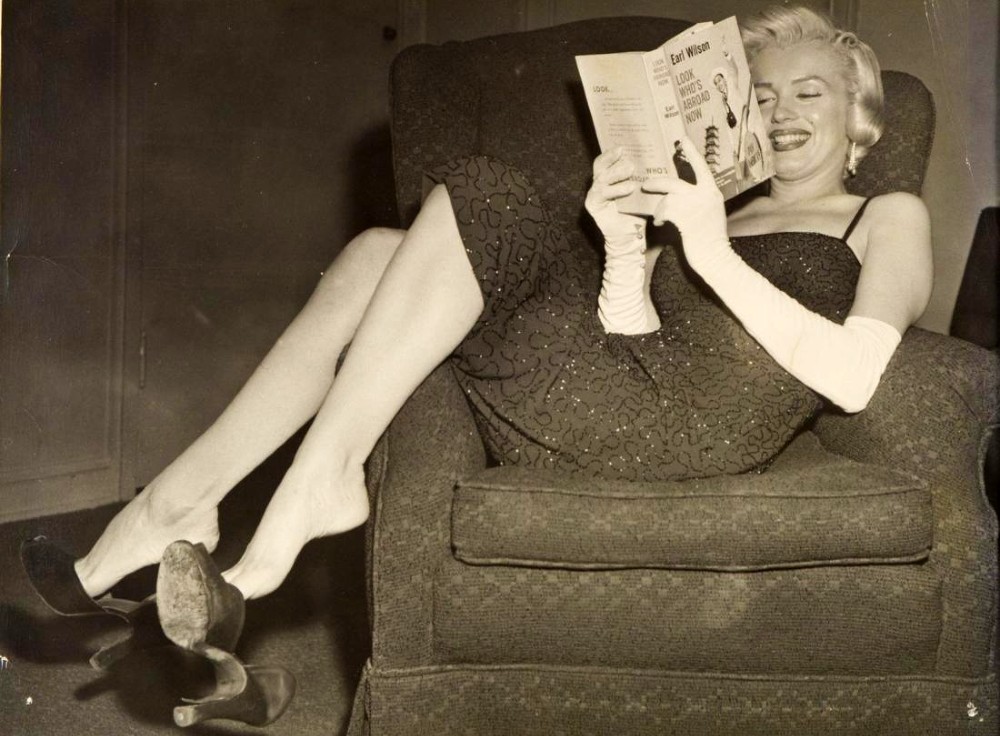
Perhaps influenced by the suffrage movements and concerns for women’s rights, shoe fashion at the turn of the twentieth century generally became more sensible and heels became flatter as a result of a demand for more comfortable footwear. After a revival in the roaring 1920s, the high heel again dipped in popularity during the years of economic crises in the 1930s, and the war and post-war years of the 1940s, when luxury items were in short supply.
From the 1950s, through the influence of emerging fashion designers such as Christian Dior, the fashion world came into its own and took off as an industry. More and more shoe designs began to appear in the shops and with Hollywood actresses and role models like Marilyn Monroe modelling high heels both on and off the film set, their popularity soared.
The high heel shoe now became an integral part of the wardrobe of most women from the West, regardless of their social status, but the footwear would soon become a controversial issue. In the 1960s, feminist groups began to criticise the high heel shoe, seeing it as a device invented by men that slowed the progress of women, both figuratively and literally.
Despite this, the shoe continued to evolve and by the 1980s, the traditional feminist view of the high heel had begun to wane. Proponents of women’s rights now believed the sexual connotations of the shoe could offer pleasure to women as well as men and that fashion in general allows experimentation with appearances that can challenge cultural norms on the issues of class and gender separation. The new feminist thinking believed that the heels gave the wearer a sense of height, power and authority and that women were wearing them for themselves, not just for the benefit of admiring gentlemen.
Throughout the ages, the high heel shoe has been more than just a form of footwear. It has been used as an indicator of social status, setting apart the haves and the have-nots. It has often been a gender-specific item of clothing favoured by women and from the early modern period right up to today, has been seen as a tool that can help someone accentuate their sexuality.
Written by Andrew Griffiths – Last updated 24/02/2023. Please visit my Sample Page or go to my passion project, The History of Fighting, for more examples of my writing.
To get history articles like this on your site, please feel free to contact me for a consultation.
References:
Dangerous Elegance - A History of High-Heeled Shoes. [Internet]. 2008. Random History. Available from: http://www.randomhistory.com/1-50/036heels.html [Accessed 16 Jan 2012].
High Heels: 4 Inches Closer to Heaven. [Internet]. 2008. Brynmawr University. Available from: http://serendip.brynmawr.edu/exchange/node/1923 [Accessed 17 Jan 2012].
Shoes of the Nineteenth Century. [Internet]. 2012. Harvard University. Available from: http://people.seas.harvard.edu/~jones/mckay/history.html [Accessed 16 Jan 2012].
Styles Change, But Heels are Forever. [Internet]. 2012. The University of Southern California. Available from: http://www-scf.usc.edu/~herschor/sub2.html [Accessed 17 Jan 2012].
These Shoes Were Made for Walking? [Internet]. 2003. Harvard University. Available from: http://news.harvard.edu/gazette/2003/02.06/26-shoes.html [Accessed 16 Jan 2012].
High Heel Quote
High heels? Painful pleasure.
~ Christian Dior ~
